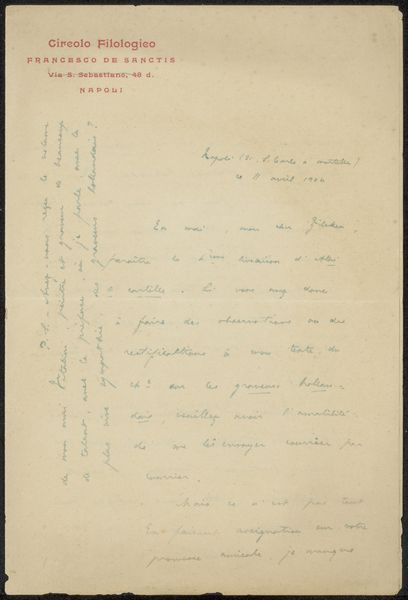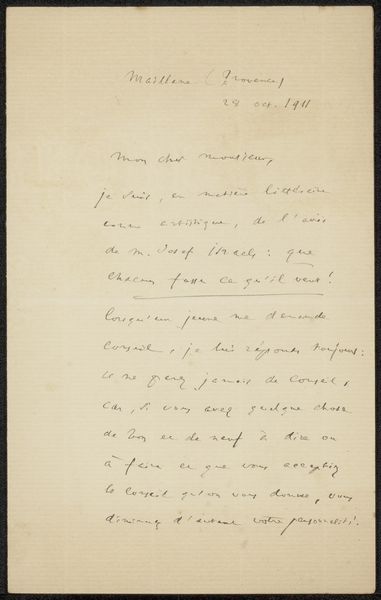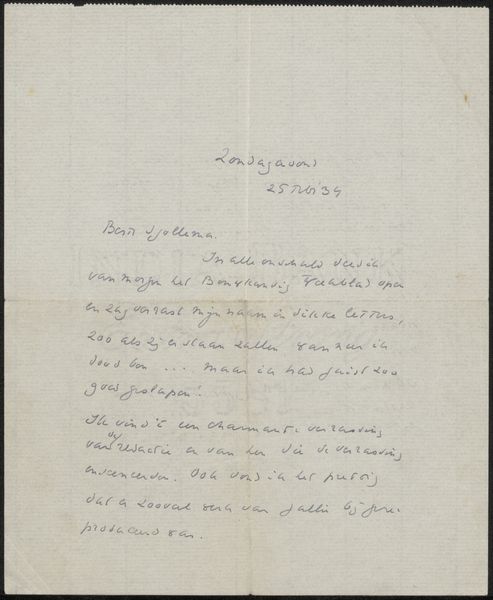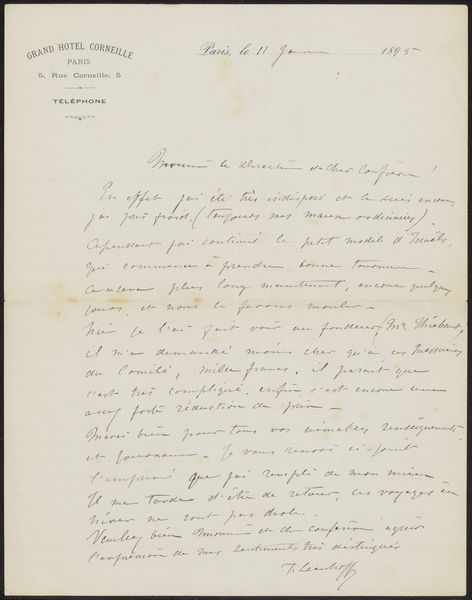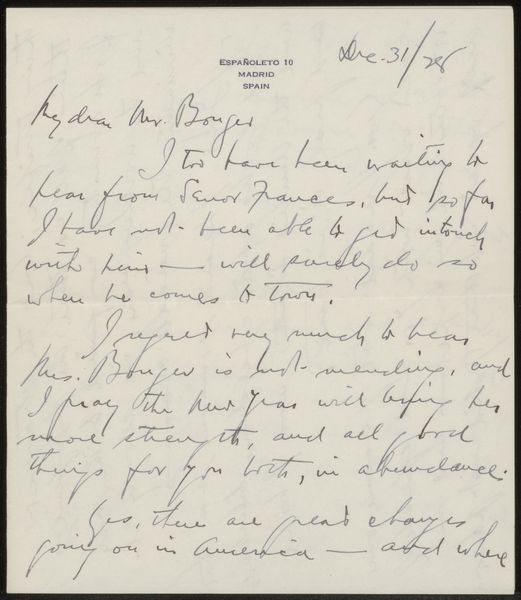
drawing, paper, ink
#
drawing
#
paper
#
ink
#
calligraphy
Copyright: Rijks Museum: Open Domain
Curator: Here we have a letter addressed to Philip Zilcken, likely dating from somewhere between 1902 and 1909. The handwriting suggests it might have been composed in haste. Editor: I'm struck by the fragility of the paper, and the delicacy of the ink. It feels almost ghostly, as if it could crumble at any moment. I wonder about the type of pen they would have used to create these tiny inscriptions. Curator: Considering that Vittorio Pica penned this, we have to acknowledge him as a critic who actively cultivated the aesthetic landscape of his time. Letters like these would've functioned as threads in the web of artistic exchange, impacting trends, promoting movements, and supporting specific figures. Editor: It does make me think about the act of writing itself and the materials used. The paper seems of reasonable quality, hinting at a certain economic privilege on both sides. And I suppose that choosing ink would have been based on many factors, perhaps even according to social customs. Curator: Absolutely. Correspondence was central to the functioning of the art world then. The letterhead—that ornate crest in red—would signal status and perhaps an association. It played a huge role in constructing the perceived importance of the letter's contents. Editor: That's a good point! Even today the physical materials— the paper weight, texture, and the precise ink colour would hint at layers of intended meanings between artist and patron. Do you know who might have penned the original manuscript, or how many copies exist? It appears calligraphic, which makes it all the more impressive. Curator: Details on production remain sketchy. However, a printed, widely distributed version of this correspondence exists, suggesting how Pica wanted to present and disseminate his perspective within a wider social frame, effectively using social connections to influence popular tastes. Editor: Right! The original is very personal and direct. The material context adds weight, almost revealing what's unseen. These are very different readings indeed. Curator: Indeed, analyzing the socio-historical impact of something seemingly as ephemeral as this, lets us understand its critical, long-term relevance. Editor: I agree. Looking closer at the object itself, the materials involved, grants another sort of immediacy; and invites us to think more concretely about the labour and processes embedded in it.
Comments
No comments
Be the first to comment and join the conversation on the ultimate creative platform.


